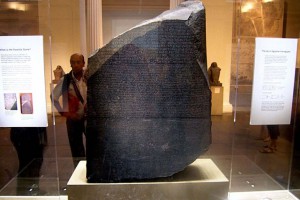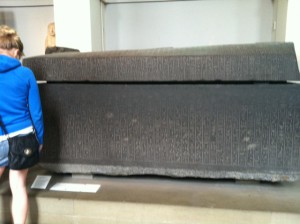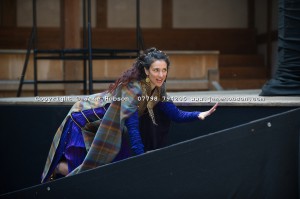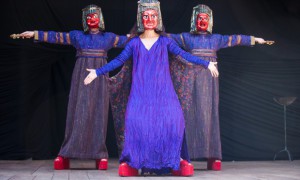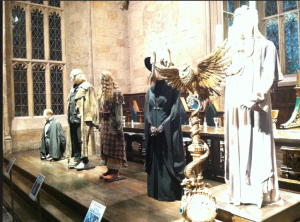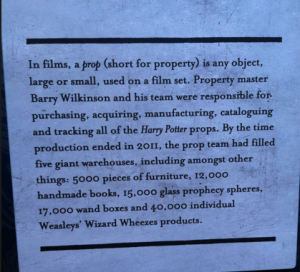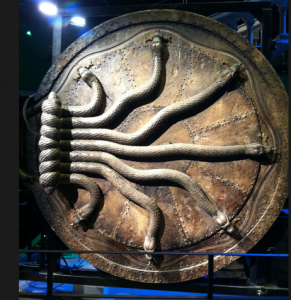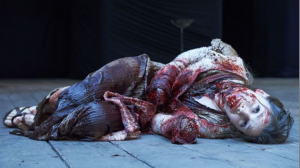Our last night in London could very easily have been a very depressing and melancholy affair. Instead, our class spent the night watching Much Ado About Nothing at the Globe Theater, and we were able to end our trip on a high note.
Much Ado lives and dies by its cast. The play itself is very strong, and finding the right chemistry amongst the actors is the key to making the text and language come alive. The Beatrice and Benedick we saw (played by Emma Pallant and Simon Bubb) were both especially charming in the performance. Bubb’s physical awkwardness and quirky habits made Benedick an endearing source of continual comedy. Meanwhile, Pallant was wonderfully snarky and incredibly likable as Beatrice. The pair had very good chemistry with each other, which made their long anticipated kiss at the end especially satisfying for the whole audience. Aside from the two leads, the other actors were good, but none were exceptional in my opinion. I was impressed, however, by the musical talent of the entire cast. The addition of music between scenes and during transitions helped liven the mood of the entire play even further. Musical segments were a good compliment to the overall energy of the play. The prominent use of an accordion (played the actress who was Hero) was a fun and quirky way to give the music a unique flair.
One other thing that I was especially struck by during the performance is how engaged the audience was in the play. The reactions from the audience and gallery were audible during key scenes of the play. For example, there were loud gasps when Claudio confronted Hero in the first wedding scene, nervous anticipation as Margaret and Hero approached the hiding Beatrice with a washbasin full of water, and cheers of approval when Beatrice and Benedick finally came together at the end of the play. The atmosphere inside the Globe last night was perfect, as everyone shared their enjoyment of the play together. In fact, the audience enjoyed the play so much that the actors were called back to the stage for a bow three additional times! That kind of atmosphere is unique to the Globe, and made it the perfect theater venue for Much Ado. The Royal Shakespeare Company theaters can be a bit too formal, and the National Theater seems to distance the performance from its audience, but the Globe welcomes its theatergoers into the same arena as the actors on-stage.
Overall, I think our whole class agreed that it was a very good performance and a great way to have spent our last night in London. I don’t know if this will be the final post on our blog or not, but in case it is, I will end with a section from the William Shakespeare’s The Tempest:
Our revels now are ended. These our actors,
As I foretold you, were all spirits and
Are melted into air, into thin air:
And, like the baseless fabric of this vision,
The cloud-capp’d towers, the gorgeous palaces,
The solemn temples, the great globe itself,
Yea, all which it inherit, shall dissolve
And, like this insubstantial pageant faded,
Leave not a rack behind. We are such stuff
As dreams are made on, and our little life
Is rounded with a sleep.

